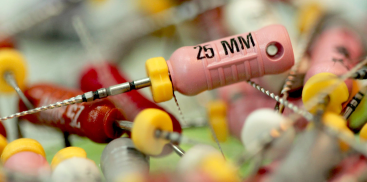How long does it take to get an implant inserted?
Removing a tooth can lead to unfavorable changes in the oral cavity, which can manifest in both the short and long term. Tooth gaps are not only an aesthetic problem but also a functional one.
After tooth extraction, problems with biting may occur, as well as the displacement of remaining teeth towards the gap. To avoid these complications, the implant should be inserted as soon as possible, provided there are no contraindications.
When should a patient schedule implantation? The best assessment of the timing of the procedure will be made by the implantologist, who will conduct a detailed dental examination and perform necessary computer tomography.
The waiting time for implant insertion is highly individual and depends on many factors, such as the patient’s clinical condition, the presence of inflammation, or tissue healing speed. It’s crucial to undergo radiological diagnostics and entrust oneself to an experienced specialist to ensure that implantation results in long-term success.
What changes occur in the oral cavity after tooth extraction?
Even the removal of a single tooth disrupts homeostasis, or the body’s balance. This has serious consequences not only within the extracted tooth but also for the entire stomatognathic system.
Bone defects after tooth extraction
In individuals who have lost teeth long ago, irreversible changes in the oral cavity may occur. This manifests not only as a bite disorder but also as bone loss, leading to the atrophy of the alveolar process. This is visible as a characteristic narrowing from the side of the tooth gap.
By taking care of oral health and responding appropriately to tooth loss, one can minimize the risk of complications and ensure a better quality of life.
Immediate implantation after tooth extraction
Immediate implantations are procedures involving the insertion of implants directly after tooth extraction. They allow for placing the implant in the site of the extracted tooth during one visit. Often, immediate implantation does not require additional incisions since the gap in the alveolar process created after tooth extraction is utilized.
Conditions for performing immediate implantation
If the doctor does not identify any systemic contraindications and there are suitable conditions of the bone substrate, immediate implantation can be performed right after extraction. The condition is the appropriate quality and size of the alveolar process.
Bone integration period
The healing of the bone substrate using bone substitute material usually takes from 3 to 6 months. This process is individual because bone regeneration occurs differently in each patient. Key in the osseointegration period are follow-up visits during which the implantologist assesses the bone healing. An X-ray is taken at each visit to evaluate the process. Properly healed bone substrate qualifies the patient for implantation surgery.
Inflammatory conditions around teeth
In cases of inflammatory conditions around teeth, which are indications for extraction, immediate implantation is not recommended. There is a risk of bacterial proliferation, which can lead to the lack of bone integration with the implant. In such situations, implantation is usually postponed for a period of 4 weeks.
Contraindications for implant placement
- Patients under 16 years of age – related to bone development, some specialists postpone the procedure to a later age
- Pregnancy
- Advanced osteoporosis
- Periodontitis
- Cancer diseases
- Diabetes
- Mental illnesses
- Treatment with bisphosphonates
- Unfavorable anatomical conditions within the oral cavity
- Temporary local contraindications, e.g., injuries, mucosal inflammation










